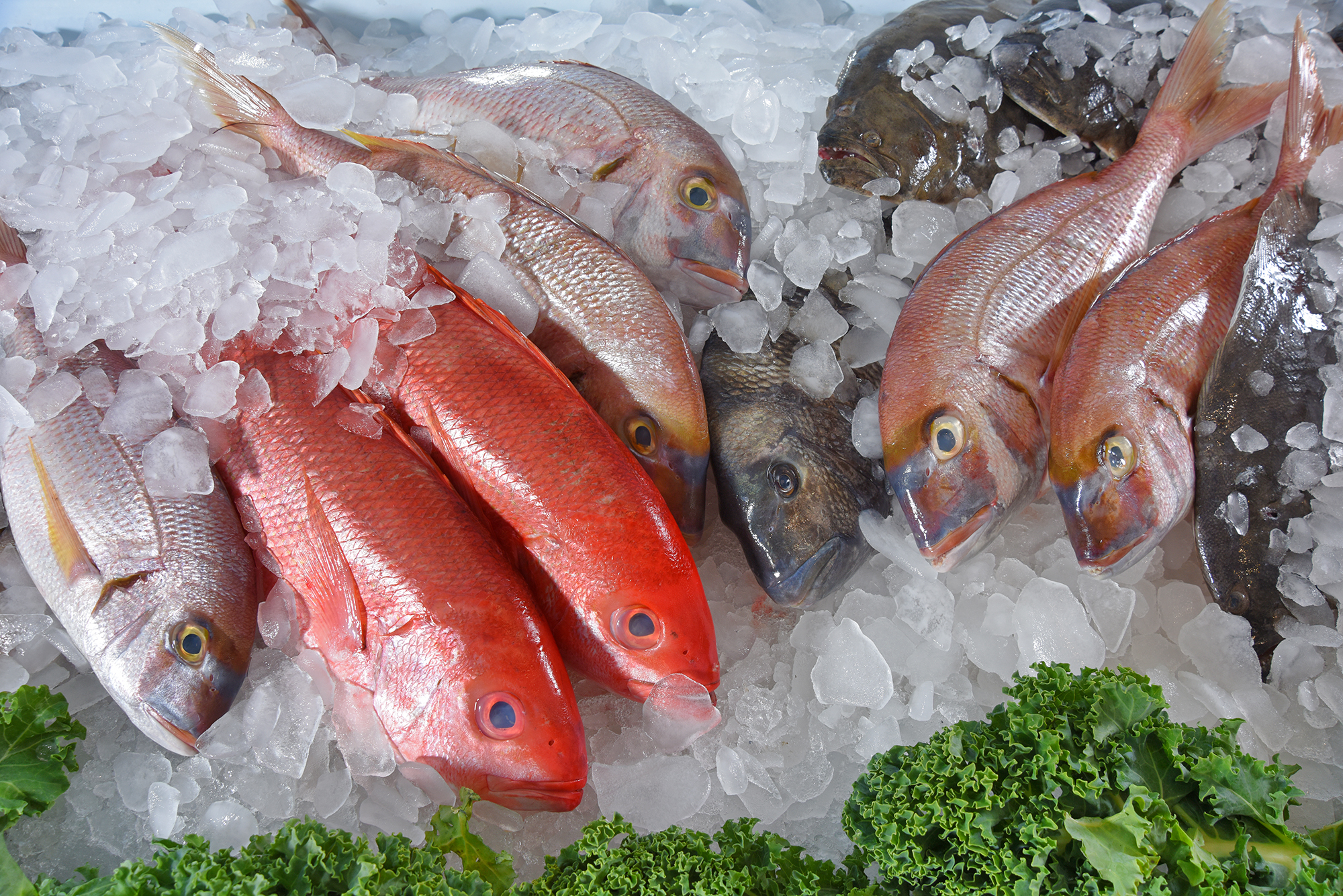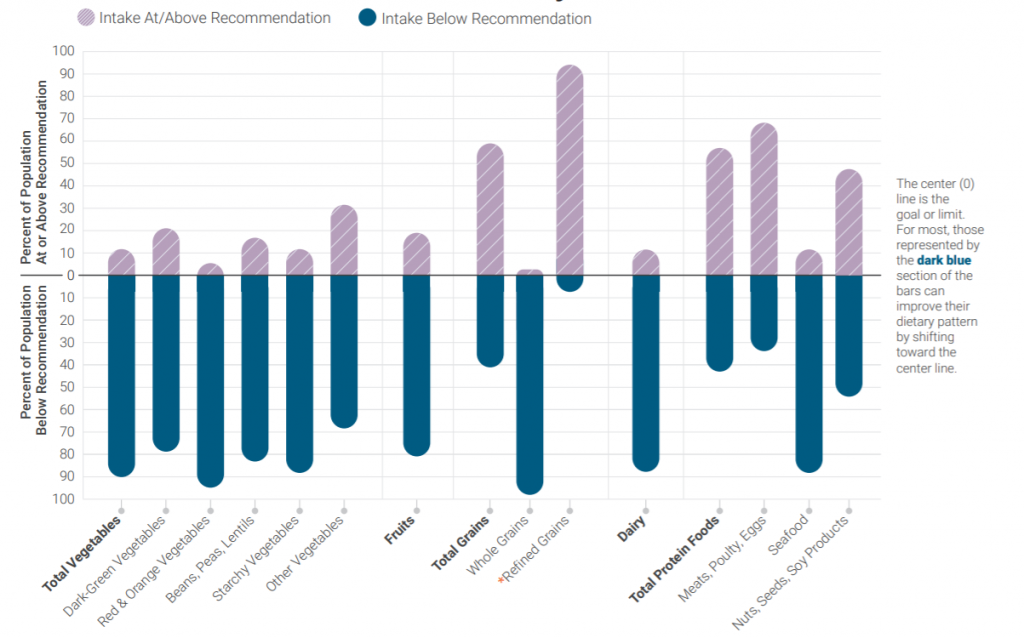
The latest review by a federal advisory committee of 20 scientists finds that Americans need to eat more fish.
The U.S. Department of Agriculture and the United States Department of Health and Human Services released in December the latest dietary recommendations for Americans. The ninth edition of the report, “Dietary Guidelines for Americans, 2020-2025,” is available for download at DietaryGuidelines.gov. This time around, they are advocating for an increase in seafood consumption like never before.
Supporter Spotlight
For the first time since 1980, the departments’ joint report included specific recommendations for all life stages. A common theme throughout is the advocacy of nutrient-dense foods — comestibles that are rich in vitamins and minerals, but low in sodium and added sugar. As a source of omega-3 fatty acids, vitamins and protein, most seafood falls into this category.
The dietary recommendations are released every five years and have a significant impact on policy and social initiatives. These recommendations influence Women, Infants and Children, or WIC, programs and school lunches, among other things. By including seafood so robustly in their report, the USDA and USDHHS are sending a clear message: Seafood belongs in the American diet.
Abby Neuroh, a registered dietician and director of nutrition at Summerfield Custom Wellness in Raleigh, said a lot of people aren’t meeting their recommended intake of seafood.
“It’s because maybe they haven’t had it prepared correctly, they’re not even sure how to cook it,” Neuroh said. “So that’s one of the things that I work on with a lot of patients is flavor profiles, ways to incorporate it into their day with easier cooking methods so that they feel confident and get the taste that they’re looking for.”

The report estimates that almost 90% of Americans currently do not get enough seafood in their diet. By contrast, most Americans exceed the suggested intake of other proteins, like beef, poultry and pork.
Supporter Spotlight
This does not surprise Ryan Speckman. Speckman and his business partner Lin Peterson are the owners and founders of Locals Seafood, based in Raleigh.
Speckman theorizes that many people don’t know how good fresh fish is until they’ve had it. He says that he himself didn’t understand North Carolina’s quality or variety of seafood until he moved to the coast. And then once he’d experienced a fresh catch, he wanted to bring that experience inland.
“I realized that a lot of the seafood we are catching in North Carolina isn’t readily accessible to the average consumer in North Carolina,” said Speckman. “And Lin and I decided that we needed to start bringing that seafood inland, and making it more readily accessible.”
According to Speckman, it’s important to keep the seafood market locally based for a number of reasons. It’s a lower carbon footprint, and it stimulates the local economy. But additionally, Speckman considers seafood to be a public trust resource and believes that all North Carolinians should have access to their state’s bountiful catch.
“A lot of the fish is caught in our state waters,” said Speckman. “And our tax dollars pay for the management of those species.”
Accessibility is geographic, but it is also knowledge-based. Buying nationally or internationally means that consumers can have whatever type of fish they want regardless of the season. Buying locally means that consumers have to trust their fisherfolk’s expertise. Many people need their fisher to guide them to what tastes good and how to cook it.
According to Speckman, education is a part of Locals Seafood’s mission.
“(Buyers) were unfamiliar with a lot of the fish we were bringing in because they never had access to it,” said Speckman. “We realized in the very early stages of our business that a lot of people were intimidated by cooking fish, not knowing all the different types of fish, and so we really had to spend a lot of time educating consumers and chefs.”
North Carolina’s extensive variety of fish is due to its unique geography and waterways. Boundary islands along the coast provide protected habitats for a large number of species.
Karen Amspacher is the director of the Core Sound Waterfowl Museum and Heritage Center in Harkers Island. She is also a self-described “cheerleader” for the local fishing industry. Amspacher credits the local food movement with strengthening the bond between North Carolina’s fisherfolk and consumers.
As a tendril of the national local food movement, some North Carolinians are turning to their own waters for their seafood. This gives the industry more of a platform to speak from as it faces issues like water quality and increased regulation.
According to Amspacher, local seafood consumption isn’t important just because of its nutritional advantages, but also because of its social value. The North Carolina coast has a rich history of fishing, and that history informs the coastal identity.
“It’s more than just a job,” said Amspacher. “There’s tradition, not only in the product they harvest, but in the landscape and the culture, and the value system, and the knowledge they have.”
According to Amspacher, people are realizing that fisherfolk are the link between fresh seafood and their dinner plates. As the federal report becomes more widely accepted and integrated into social programs, that link may grow even stronger.
The latest dietary report recommends 8 ounces of seafood per week for an American consuming 2,000 calories per day. For North Carolinians, that 8 ounces isn’t far away.
“It’s very important to everybody that these fishermen stay in the water,” said Amspacher. “If they stay in the water, they continue to be the link.”












